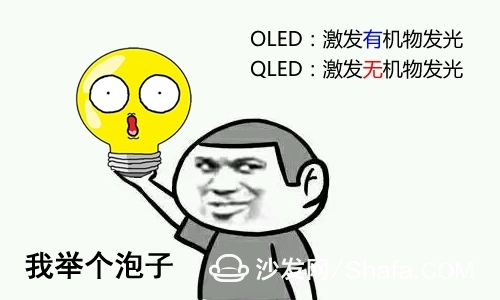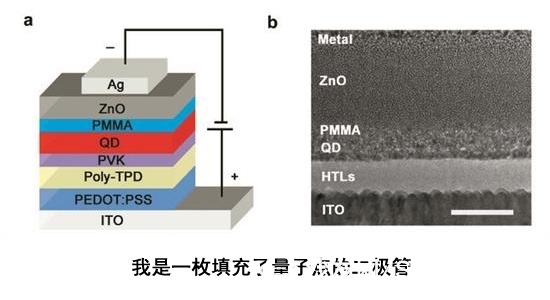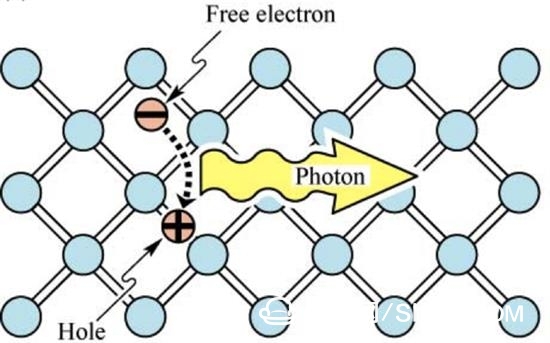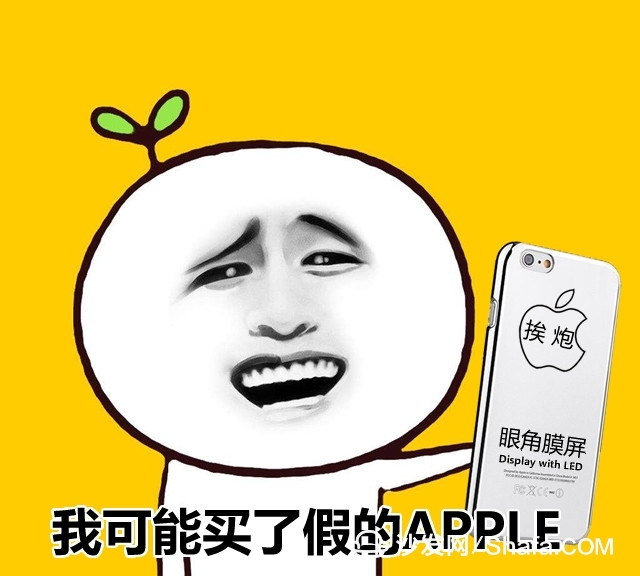The difference is a thousand miles. This phrase is often used to describe two things that look alike and are completely different. QLEDs and OLEDs are good models. OLED is called Organic-Light-Emitting-Diode (Organic-Light-Emitting-Diode) and QLED is called Quantum-Dot-Light-Emitting-Diodes. On the surface, two The difference between the two is Organic and Quantum Dot, but in fact, the difference between the two is almost a whole world.
(In the article, OLED, QLED, and LED all refer to the application of display screen manufacturing, namely, OLED display and QLED display)
Simply put, OLED is based on the principle of organic electroluminescence, and QLED is based on the principle of inorganic electroluminescence (or photoluminescence). As the thermal stability and chemical stability of inorganic materials are generally higher than those of organic materials, theoretically, the key indicators such as light source stability and lifetime of QLEDs are stronger than those of OLEDs, which is also considered by some to be the next generation that is more worth looking forward to. Show technical reasons.

呃 一 一 一 一 一 一 一 一 一 一 一 一 一 一 一 一 一 一 一 一 一 一
OLED and QLED are brothers of the same father According to the previous description, QLED is an LED that emits light through inorganic substances, and OLED is an LED that emits light through organic matter. Q and O are like their fathers, and LEDs are their mothers. LED - Light Emitting Diode light-emitting diode, this device contains a positive and negative, in the current flow from the cathode to the anode, through the diode in the light material, the current stimulate it to release light energy, we see it - bright.




· Although OLED and QLED are blue and green are blue based on the principle of light emitting diodes, QLED screens and OLED screens are much stronger than ordinary LED display screens in terms of luminous efficiency, pixel density, color performance, and power consumption control. . This is because the LED lamp bead core light emitting device is an electroluminescent semiconductor material chip, the manufacturing process is relatively simple, even the highest technology of high-density LED display (small spacing LED) can only achieve 0.7mm point Spacing, calculated on the screen size of the iPhone 7 (138.3mm×67.1mm), the screen resolution was only 197×95, directly reduced to electronic watches (Apple, Sony are trying to build Micro-LED technology to catch up with OLED and QLED. The long distance of commercialization is not discussed here.)

In the manufacturing process of QLEDs and OLEDs, there are scientific and technical level specifications from materials to equipment, so that only a few companies in Germany, Japan, and South Korea that can get involved in the upstream supply chain are totally based on the standards of the future black technology. The technical barriers are steadily advancing, and the results presented are certainly not comparable to those of “workshop†products.
QLED and QD-BLU are not true and false. The Monkey King has spared no effort to publicize the brand. The concept of QLED has been greatly promoted. Especially when purchasing flat-panel TVs, most consumers have already produced quantum. The more advanced cognition of TV. And most of them may not be clear, the same QLED TV, in fact, the difference is still very large.
The commercial QLED TV is an application for improving the backlight of the liquid crystal panel by utilizing the characteristics of photoluminescence of the inorganic quantum dot material, and the accurate description should be QD-BLU (Quantum Dot Backlight Technology).



Smart TV/box information can focus on smart TV information network sofa butler (http://), China's influential TV box and smart TV website, providing information, communication, TV boxes, smart TVs, smart TV software, etc. Answering questions.
(In the article, OLED, QLED, and LED all refer to the application of display screen manufacturing, namely, OLED display and QLED display)
Simply put, OLED is based on the principle of organic electroluminescence, and QLED is based on the principle of inorganic electroluminescence (or photoluminescence). As the thermal stability and chemical stability of inorganic materials are generally higher than those of organic materials, theoretically, the key indicators such as light source stability and lifetime of QLEDs are stronger than those of OLEDs, which is also considered by some to be the next generation that is more worth looking forward to. Show technical reasons.

OLED and QLED are brothers of the same father According to the previous description, QLED is an LED that emits light through inorganic substances, and OLED is an LED that emits light through organic matter. Q and O are like their fathers, and LEDs are their mothers. LED - Light Emitting Diode light-emitting diode, this device contains a positive and negative, in the current flow from the cathode to the anode, through the diode in the light material, the current stimulate it to release light energy, we see it - bright.

Diode circuit diagram (left) and schematic diagram of LED lamp beads (right)

QLED multilayer structure schematic

Discharge luminescence process after combining electron and hole


QLED and QD-BLU are not true and false. The Monkey King has spared no effort to publicize the brand. The concept of QLED has been greatly promoted. Especially when purchasing flat-panel TVs, most consumers have already produced quantum. The more advanced cognition of TV. And most of them may not be clear, the same QLED TV, in fact, the difference is still very large.
The commercial QLED TV is an application for improving the backlight of the liquid crystal panel by utilizing the characteristics of photoluminescence of the inorganic quantum dot material, and the accurate description should be QD-BLU (Quantum Dot Backlight Technology).

Da Vinci's inconceivable invention of the "photoluminescent" principle flashlight, even God explained the QD-BLU technology
(Video film made in China Lingling stills)
The real QLED TV is based on the principle of electroluminescence of the inorganic quantum dot LED, so that the QLED material actively emits light, and displays different colors by controlling the properties of inorganic components and particle size, thereby realizing a kind of screen display function. application. 
Inorganic quantum dot material
OLED and QLED manufacturing process is different in the production process, OLED emission center as organic molecules, the current multi-evaporation process used to produce, that is, the high-temperature processing of light-emitting materials into a small molecular structure, and then re-condense in the designated location The process, this method is extremely demanding to the environment, and the process is complex, the equipment is precise, and the most important thing is that it is difficult to meet the production needs of the large-size screen. The QLED luminescence center is a semiconductor nanocrystal, which can be dissolved in various solutions and has the possibility of being prepared by solution. On the one hand, it can effectively reduce the manufacturing cost, and on the other hand, it can also overcome the limitation on the screen size. 
BOE Introduces 5-inch AMQ LED Display Panel
(Image from the network)
Although some time ago, BOE has released a 5-inch QLED display panel to make it shine for everyone, but there are still many technical difficulties that need to be overcome in order to put the QLED screen on the commercial mass production process. The research on quantum dot QLED technology has been 20 years old, and the results we have achieved are not satisfactory. However, we can see that there are more and more panel companies. Players in the upstream material field are actively involved in QLED technology. In the research and development, for the ideal guess, in the near future, QLED may have the opportunity to compete with OLED in the display market. Smart TV/box information can focus on smart TV information network sofa butler (http://), China's influential TV box and smart TV website, providing information, communication, TV boxes, smart TVs, smart TV software, etc. Answering questions.
The additional lens that can be attached to the original camera lens can be selected from a variety of lenses, such as 37mm 0.45x/0.43x wide-angle lens+2.5x/2.2x telephoto lens kit, 52-58mm fisheye lens, 58mm 0.45x/0.43x wide-angle lens+2.5x/2.2x telephoto lens kit ,52-58mm 0.43x wide-angle lens+ma macro lens kit and 25mm f/1.8 full manual lens
Camera Lens,Manual Camera Lens,Optical Camera Lens,Wide Angle Camera Lenses
shaoxing shangyu Tianya Photographic Equipment Factory , https://www.tianyafoto.com